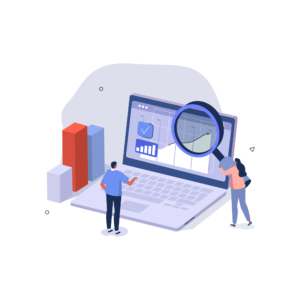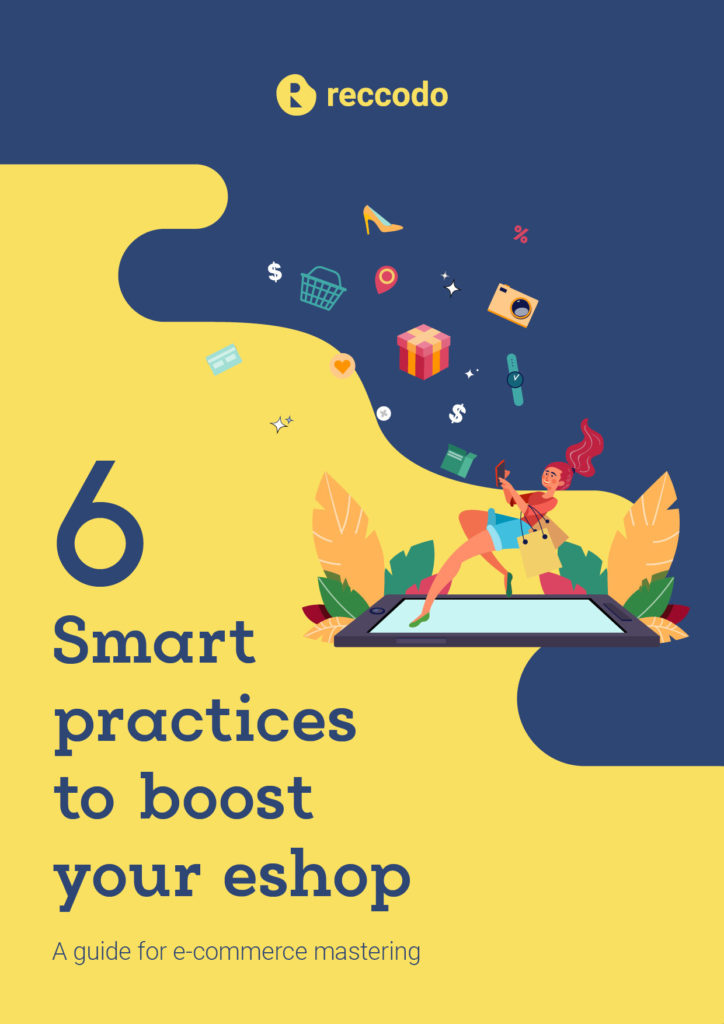Measuring many different KPIs for your eCommerce business is very important, as this will help you make decisions based on data and not just personal opinion.
As mentioned in our previous blog: data=knowledge=power. The more data you have, the more accurately you can measure your KPIs to have a powerful place on the ecommerce world.
Which KPIs are suitable for my eCommerce
There are not really specific KPIs that everyone should measure, but there are some very useful and popular ones. However, this does not mean that all e-shops should follow the exact same KPIs, as this depends on the different strategies and objectives of every business and the period. The KPIs that e-shops measure can even change based on the results of other KPIs in the previous period.
It is important to know your needs and set your goals in advance, so that you can also set up the KPIs for your e-shop.

Below are some examples of the most used KPIs in eCommerce and their explanations to help you get some insights on which ones you can use, how and why.
- Conversion rate (CR) – is the number of customers that complete a sale after visiting your site and viewing a product. Conversion rate is closely tied to overall revenue metrics. You can also measure the conversion rate per traffic channel to understand which source has the best performance for your business.
- Average order value (AOV) – is the average amount of money a customer spends per order. Increasing your AOV can be one of the easiest ways to boost your revenue. It can also help measure how well you capitalize on cross-selling and upselling opportunities.
- Gross profit margin – is the actual profit you earn on top of the cost of goods sold (COGS). It is the difference between your revenue and profit as a percentage. This is essentially your profit on the product after sale, factoring how much you spent on the inventory yourself.
- Cart abandonment rate – it refers to visitors placing items in their shopping cart, but then leaving the site without completing the purchase. The number of items added to the cart, the value of items added to cart, and how long they shop are all important as well.
- Customer lifetime value (CLV) – is the amount of revenue on average that you earn per person throughout their entire lifetime as a customer for your company. Knowing how much revenue a customer generates over his/her lifetime can help you invest in the right channels sooner.
- Customer retention rate – refers to the rate at which customers stay with a business in a given period of time. It is important to monitor your customer retention rate to see if consumers are coming back – and to understand what’s driving them to stay or pushing them to leave.
- Customer engagement – is how much time a user spends on the product while completing actions or using certain features. The level of engagement your customers have with your service, often measured using reactions, shares, and subscriptions. The more active your customers are, the more likely they are to purchase and share their experience with others.
- Customer acquisition cost (CAC) – tells you how much your company spends on acquiring a new customer. It’s the amount spent to acquire customers divided by the number of acquired customers. This gives you an idea of how much effort — and money — it takes to actually get a paying customer.
- Bounce rate – is the percentage of customers that abruptly leave your site after visiting only one page. If lots of users are bouncing off of a page quickly, then you need to assess why that is.
- Average ticket resolution time – is the time needed for a customer problem to be solved. The longer it takes, the less likely they are to become a repeat customer.
- First response time – is the average amount of time it takes a customer to receive the first response to their query. It should always be as low as possible.
- Traffic source – tells you where visitors are coming from or how they found your site. Knowing where customers are coming from can help you capitalize on your best channels.
- Time on site – tells you how much time visitors are spending on your website. Generally, more time spent means they’ve had deeper engagements with your brand.
- Pageviews per visit – refers to the average number of pages a user will view on your site during each visit. In general, visiting more pages usually means higher engagement. However, if it takes the user too long to find what they are looking for, you may need to check again your website design.
- Email open rate – tells you the percentage of subscribers that open your emails. If you have a low email open rate, you could test new subject lines, personalize the information your send to each user or even just try cleaning your list for inactive or irrelevant subscribers.
- Click-through rate (CTR) – referring mostly to email CTR. It tells you the percentage of those who actually clicked on a link after opening. This is far more important than the open rate because this is what will drive traffic to your website in the end of the day.
- Return on Investment – how much your efforts earned your business. The higher this number, the better. The ROI accounts for all of your expenses and earnings related to a project. This can be an ad, an extra tool you added on your website or marketing investment.
- Number of new visitors VS number of returning visitors – New visitors are the ones that are coming to your e-shop for the first time. Returning visitors are the ones who have been there before, they are the proof that your web shop was a conscious choice for them. These two numbers can help a lot with marketing campaigns planning.

In this blog post and the above list, we have focused more on sales, marketing, and user experience KPIs.
There are of course metrics that include other sectors of your business, including service or delivery, that are not extensively mentioned here. These are also extremely important and should also be taken under consideration, as these are also the direct connection points with your customers.
How often should I measure my KPIs
As we move into our list of recommended ecommerce metrics, you might be wondering how often you should check your metrics. Well… it depends.
Business needs are different for every e-shop. At the same time not all e-shops have the same amount and frequency of data to measure all KPIs all the time. Below are some examples to help you decide how often you should measure your KPIs.
- Weekly
Some KPIs should be measured on a weekly basis to ensure that your business is healthy. Examples include website traffic, social media engagement, and impressions.
- Bi-weekly
Bi-weekly KPIs are those best suited for a larger sample size, less influenced by any variations that may occur within a given week. These bi-weekly metrics might include average order value (AOV), cost per acquisition (CPA), and shopping cart abandonment.
- Monthly
Monthly KPIs require a longer data window due to traffic patterns or, more likely, your own marketing patterns. So, these include email open rate, multichannel engagement, reach, and add-to-cart abandonment (or other micro-conversions).
- Quarterly
Quarterly metrics are the most strategic, at least as defined by these time periods. Because your weekly and bi-weekly metrics have proven that your business is healthy and surviving, these quarterly metrics will prove that your business is really growing. These might include email click-through rate and customer lifetime value.
Keep in mind that the above are just some guidelines to help you understand the frequency of measurement of different types of KPIs. This does not mean you should follow them blindly. As mentioned before, every business has different needs and therefore different priorities for their KPIs.
Note: You should also analyze the current performance of your store against average and previous performance. Comparing the current performance with one at a specific moment in time is essential, so that you know where you are now and pivot, if needed, to get you where you are aiming to be.
Wrapping up
There are so many KPIs to choose from and so many ways to combine their results in order to reflect your business needs. Once you have set your goals and selected your KPIs, monitoring them should become an everyday exercise.
KPIs may seem confusing and difficult to apply. But the time and effort that you put into tracking and understanding them will pay off.
Remember, knowledge is power. This is what you need to push you forward!
Georgia Papaioannou
Business Development Manager @Reccodo
References
https://www.klipfolio.com/resources/articles/what-is-a-key-performance-indicator
https://www.bolt.com/resources/ecommerce-metrics/
https://databox.com/ecommerce-kpis
https://www.oberlo.com/blog/key-performance-indicators-kpis
https://thegood.com/insights/better-business-with-ecommerce-kpis/
https://www.bigcommerce.com/blog/ecommerce-metrics/#what-is-a-metric
https://www.riffonlinemarketing.nl/blog/marketingstrategie/12-e-commerce-kpis-die-iedere-webshop-moet-volgen/
https://www.channelsight.com/blog/12-kpis-every-ecommerce-brand-should-be-measuring
https://www.wordstream.com/blog/ws/2019/01/23/ecommerce-kpis
https://towardsdatascience.com/data-knowledge-power-c679fa85beb4

